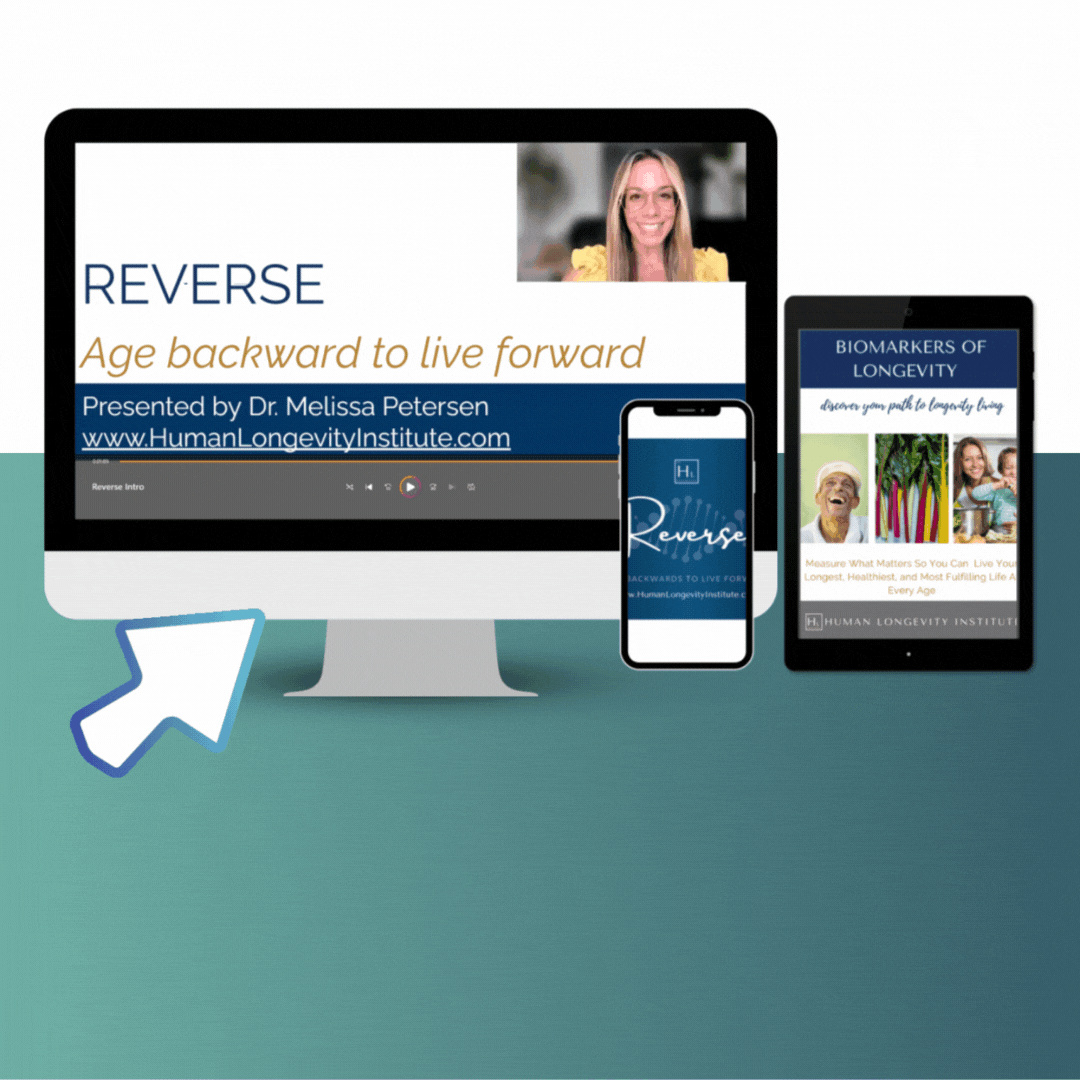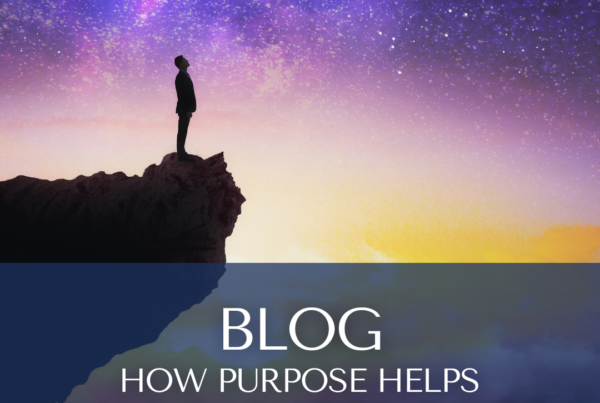Available on Spotify – Amazon Music
Podcast E4 Living Longer with Stress
Welcome to the human longevity podcast. I’m your host, Dr. Melissa Petersen, and together we’re about to explore the science and solutions that can allow you to live better longer.
In today’s episode, we’re going to look at stress and we’re going to kind of peel back the layers to understand, can this be a tool that we can actually use to live longer?
Show Sponsor: Brain Tap- the leading neurotechnology to optimize your brain and body. To receive your FREE 15 day trial visit: humanlongevityinstitute.com/braintap.
Show Notes
While I know you’re going to say, but Melissa isn’t stress bad?. Doesn’t all the literature. Tell us that stress correlates with an increase in all-cause mortality, cardiovascular disease, cognitive decline, immune dysregulation, and auto-immune conditions, and so much more???
While yes, there is truth in that there’s much more to the story of stress than just dysfunction and distress.
In today’s episode, we’re going to look at STRESS through a more expanded lens. And we’re going to find where stress can actually be a tool, a tool that we can use every single day that is effective by way of the research to slow down that rate and pace of biological aging.
Get ready to learn how to discern when stress is and can be beneficial for you or when it’s overloading your system. You will discover how to really pump the brakes of distress and move into more optimal states of use stress and hormetic stress, the type of stressors that can increase our performance, our flow, our health, our hormone optimization, and so much more.
Before we dive into today’s episode, let’s give a special thanks to our show sponsor brain tap. Now, as I’ve said before, brain tap is a one of my favorite apps and tools of neurotechnology. Anytime I listened to those audio sessions that are backed by neuroscience, what happens is I move into a state of coherence and it begins to regulate and optimize my brain waves as well as my heart rate. So if you’re looking for a fast way to really get into use stress, to entrain your brain and your body for greater focus and flow, energy and performance, then you’re going to want to go grab your free 15 day trial over at humanlongevityinstitute.com/braintap.
Now let’s jump into the show…
Stress. What is it? We have this kind of classic idea that it’s something bad. It’s overwhelm overload too much on our systems. And the longer we have this stress mentally and physically the greater, the likelihood that the dam is going to break in one day, it’s all going to fall apart and we’re going to break down. And while that’s not entirely untrue, let’s go back to the beginning.
Stress is inherently neutral. It is actually not at the outset, good or bad. It’s just a demand. It’s an input into our system. (1) And the way the human system is designed as we actually need stress, stress is the type of demand that allows this human body to adapt, to respond, to learn, to grow and evolve forward into new states of thriving.
Stress is actually essential and it’s really beneficial if we want to get stronger and live longer with greater awareness, capacity and resilience. So where do things go awry Why do we all know stress as being so bad Well, good question.
Glad you asked stress is categorically again in this neutral state, that demand, but here’s what happens as we chronologically age doesn’t life, get a little bit more hurried. Doesn’t it become a little bit more complex? Aren’t there more things coming at us quicker, faster day over day, week over week, year after year. Yes. Right. And so just by the sheer fact of our exposure to life, how we interact with life, the people, the places, the environments, the things that already starts to put more of a demand on our mind and our body. Now, the demands in and of themselves are not bad.
Here’s the recipe. It’s how long are we exposed So what’s the frequency, intensity, the duration of this exposure?
Okay. So we’re going to ask ourselves, well, how long, how often, how extreme are these demands or these inputs? And we really kind of divide that by our response to it.
Now, what do I mean, our response to a stressor, we can either perceive it. Perception drives reality. We can perceive it as being something bad, something overwhelming, something that’s too much that we just have to grit our teeth and bear it right. Or, and that’s distress literally in the research. (1) We know that the perception that stress is bad, immediately increases the stress hormones of cortisol. And we’re going to come back and talk about cortisol a little bit more here in just a moment. So stay with me on the flip side, our awareness, our response to stress can be our perception, our response to it as like, Hey, there’s a lot coming at me, but I’m eager.
I’m curious, I’m open. Like, I’m going to take this on. This is a challenge that I’m saying yes to now that is a different state. It’s actually called Eustress.(2) So our response to what’s coming at us to the demands on our system, physically, mentally, emotionally, chemically, and environmentally, it all starts to stack up.
First and foremost, based on our perception of it will immediately inform our physiology. So if we think it’s good, we’re right. If we think it’s bad, we’re right. If we think it’s bad and too much, then that again keeps that cascade of stress, hormones active and accelerated increasing day over day, accumulating like a slow drip over time. I call that keeping our foot on the gas pedal of life. There’s always more, always more, never enough. We got to try to get out in front of it and go faster and harder yet it catches up with us.
We can never quite outrun distress this overload. However, what we can do is we can begin to pump the brakes. And in those moments, when we pump the brakes, that’s having a new response to the frequency, intensity duration of our exposure to the demands.
When we begin to pump the brakes, then the body begins to act and respond the way it was actually innately, designed because here’s what the body does, what it wants to do. When a demand, a stressor comes into the system
- Step one, it’s going to recognize, oh, there’s a demand here. I got to handle it.
- Step two, it’s going to respond. It’s going to do the thing it needs to do to take care of that demand, that input, that information.
- Step three is now the demand has been met, it’s time to rest. The rest is where the magic happens.
It is in that rest cycle where the body is able to integrate the learning from what it just took on. This is when we begin to adapt. We grain, we gain greater intelligence, greater exposure, greater experience, and greater capacity of understanding and handling. This is also the principle that’s applied in hormesis or hormetic stress. It’s this idea of the kind of doing hard things and not populating our system a bit by bit over time. (3)
So we go recognize, and respond. We come back to rest because in the rest is the recovery and the rest is the learning. But more importantly in the rest is where the system then actually expands into a new, greater state of resilience. Resilience is uniquely linked to longevity. What they have found in the research of centenarians is that they have a greater state of resilience than those that are not centenarians. We know in the very definition of aging, it is a loss of resilience in the system. (4)
Meaning as we chronologically age, we go out and we meet a demand. If we, it takes longer and longer to recover from that demand. And this is an accumulation over time. So meaning if we just keep our foot on the gas pedal of life on and on and on. We just think stress is stress. We minimize and rationalize, oh I’m just busy, it’s just is what it is. It’s just modern-day life.
Now, we continuously overload and flood our bodies with more and more and more. We don’t pump the brake. We don’t take rest cycles long enough, then we never fully recover or repair.
Now we’re going to look at how can you begin to tell if you are overloaded or if you are recovering if you’re ready to meet the day, if you are in a dynamic and resourceful state, or if your system already needs to pump the brakes.
Before we move into that, I want to give you a little awareness. So when we classically think of distress, fight, or flight, the system is like ready to protect you. It’s going to do what it needs to do to handle what’s coming on. And we need to energize the system in order to meet the demands. So cortisol is that hormone. That’s going to increase the release of glucose into the system so that you have the fuel to fight or flight with glucose is that fuel of ourselves the first, first on demand to make that ATP. So we know that’s a natural response. Okay. However, if our foot’s always on the gas, cortisol is staying elevated. The longer cortisol stays elevated, the more glucose is in our system. Meaning the more sugar we have, the more our blood sugar stays elevated.
Well, that’s not good. Elevated blood sugar leads to metabolic. Dysregulation increases the rate and pace of aging leads to pre-diabetes diabetes, all those things that we really don’t want. Okay. The more cortisol, the more glucose, the more insulin, the greater, the likelihood of insulin resistance. So this is one of those things that we say, Hmm, well, cortisol is natural. It’s going to release. (5)
Yes. Cortisol is a hormone that works much like every clock in the cells of every cell of our body. Rather, excuse me, we respond to this light-dark cycle. This circadian rhythm and cortisol is a hormone that is paired into this circadian rhythm. It rises with the sun in the morning so that it raises us out of bed, and increases our heart rate. Our blood pressure gets our blood pumping and gets us energized. So we’re ready to meet the day.
Beautiful. And then it is supposed to lower starting in the afternoon, coming all the way down, setting with the sun at its lowest point between 10:00 PM and 2:00 AM. That’s when ideally we should be in bed. Think about primitive cultures. They are just living by the natural light cycles. We don’t have all this artificial blue light constantly bombarding our brain dysregulating, those clocks. So what does this lead to It leads to everything from insomnia and sleep difficulties, right It leads to a constant state of agitation because our systems are not powering down. They’re staying in this ready state. These hormones are staying elevated too long. And then when we have these hormones, they are pro-inflammatory. And this, this accumulation, if it happens once or twice now, and then not a big deal gang, right Stress is distress. It’s just a demand. If we give our body the time and the ability to recognize, respond, and then rest to reset, we’re cool. (6)
We can actually benefit from the gains of it, the hormetic gains over time. But again, when we do not rest, we do not recover. We keep the foot on the gas. We keep our cortisol dysregulated. It raises more and more and more, a little drip, slow drip. Over time, days, over weeks, over years, we ended up being 50, 60, 70 go, and I eat a clean diet. I’ve got high blood sugar. I don’t know what to do. I’m doing I’m exercising and I’m dieting and I don’t eat any sugar. I don’t eat any fried foods. And I just can’t figure it out. Well, it’s not just about the food alone. Doesn’t raise blood sugar. Cortisol is a big driver. So again, yes, there is this side to stress that we need to be aware of. And awareness is step one, because if you are constantly perceiving life as being overwhelming overloading too much, and you don’t have enough time, enough resources, and enough support within yourself to go meet those demands.
Then right then and there, I want you to realize what we know from the research. When we perceive negative dis stress that increases our rate and risk of all-cause mortality by 43%, meaning the person that perceives their life as overwhelming overloaded, very stressful has a 43% greater likelihood of earlier. (7) And, and, a more significant cause of death than that person who perceives their stress as positive. It’s a demand is a challenge. I’m excited. I’m going for it. My perception of it is this is happening for me, not to me, I’m equipped. I’m going to be resourceful or you know what I’m going to pump the brake. I’m going to take arrest. So step one, remember stress is neutral. It’s our perception of it and how we respond to it, that frequency, intensity duration. So if you’re beginning to perceive that things are a lot, you’re feeling it in your body, you’re feeling it in your mind, you’re feeling it right.
And you’re experiencing it. And that’s true for you, but it’s okay because just as much as stress can overload us, it can also energize us. It can also invigorate and heal us and can be such a powerful tool. So once you begin to be aware that you’re kind of in that overload, you’re going to immediately just go app, step one. Can I reduce or remove my exposure Can I somehow lessen the intensity, frequency, the duration of my exposure to this demand, right Let’s say it’s a coworker. You can’t change who your coworkers are, but can you change the amount of interactions and the way in which you and your coworker may interact so that you are not as distressed by it. It has a less of an effect on your system.
You start to respond to it differently.
- That’s step one of, kind of pumping the brakes, just reducing your exposure.
- Step two, we move into understanding how stress actually can allow us to live longer. When we realize that again, not all stress is bad, but when we identify it and when we respond to it differently, we can actually use it to optimize our physiology where we can be in any situation, not an overwhelmed, but instead in focused flow, we can be present.
- Step three now, we can be in it. We can be ready for it. And when we are in this state, it’s actually called youth stress and Eustress. What we know in the research is that it lowers cortisol. It actually lowers. So this is a form of stress that lowers the stress hormones. It actually increases testosterone, increases oxytocin. It helps to increase performance, focus, memory, and ability. So here’s the really great thing when we know, oh, I’m an overwhelm. We go, okay, wait, can I shift how I’m thinking about this
Can I perceive it differently? Can I respond to it by just stepping back for a moment so I’m not staying in it and overloading my system. That’s how you can begin to pump the brakes.
Next, can I then begin to intentionally, put myself in Eustress more consistently?
And the answer is yes. then here’s how you do it.
You can pump the brakes of distress anytime of any day by activating your autonomic nervous system. (8) This is regulated by what’s called the vagus nerve.
It’s a big kind of highway system between your fight or flight overwhelm overload got to go to rest and digest focused flow and connect, and the fastest way to move out of distress and into you stress out of fight or flight and into ease and focused flow is by pumping the brakes with activating the vagus nerve. Now you might say, Melissa, how do I do this
Okay, here’s the good news. I’ve already given you a little insight in episode three, when we spoke about oxygen saturation, and we really started to explore breath, breath as a tool to begin to really optimize your own physiology.
Well, that same principle applies here.
The first way we can activate our vagus nerve is simply by slowing down the rate and pace of our breathing that immediately triggers that. And remember, what we talked about in episode three is if you can begin to go a low and slow breathing in and out through the nose and slowing down that breath rate, ideally to about six to eight breaths per minute, you’re going to be in a parasympathetic focused flow state. Now that little tool we talked about in that last episode is a box breath. Breathe in through your nose for four counts, hold for four, counts out through your nose for four counts and hold for four counts.
And if you just start with that, that’s going to get you in a rhythm. That’s going to slow you down closer to that six to eight-breath cycle per minute. Now that’s just one way, but Hey, you might not be able to just like really go into a focus. You could be in a situation real-time and need some other way to activate that vagus nerve.
Here are a few more of my favorites: it’s actually humming or singing or chanting. So I’ll be walking through the grocery store and not even realize that I’m just humming or I’m coming in and I’m singing a song. And I’m actually, self-soothing my autonomic nervous system. I am present in life, but I’m not in overwhelm or, or overloaded. I am focused. I’m in flow. And I’m really enjoying the moment because I am just automatically practicing and toggling out of distress into you stress. (8)
So a few other ways to activate your vagus nerve is to laugh, to gargle, to breathe, to chant, to sing to hum.
Now we’re going to continue to go deeper into this conversation episode after episode. So for right now, you’re now starting to get a sense of how you can start to pump the brakes of constant stress overload in your life. You can now begin to be more cognizant and present in awareness. You can consciously get into focus, flow, and guess what happens when you do this, you’re starting to lower your heart rate. You’re starting to increase your heart rate variability. And what does that mean You’re allowing your system to become more resilient. You’re giving it those little micro-moments of rest so that it’s not constantly always on. And when we recognize respond and then arrest that’s when the system starts to recover.
That’s when we become even more resilient and resilience is correlated with health span and lifespan in the literature. So if you want to live better, longer than you want to pump the brakes of distress, you want to actively activate your vagus nerve. You want to move into Eustress, and you want to start to do more of those things that are soothing for you.
Another one of my fun ways is just going out for a walk in nature, and drinking a nice cup of warm tea. Now here’s the last insight I want to share with you today. You may not know Melissa. How do I know I mean, I think I’m fine, but am I, you truly may not know. And that’s fair. So that’s when I like to, if you’re really not quite tuned in, then simply by building your awareness muscle. Notice what you notice and ask yourself how you are feeling, what you are feeling and where you are feeling it.
For example, how do I feel? Tense. What do I feel? Tight Where do I feel this tight tension? In my shoulders.
Now, how can you know the impact? Use biomarkers and biometrics.
Start with your heart rate.
You can use wearable technology for any of this, but you don’t need wearable technology. You can simply take your fingers, put it on your wrist, check your pulse, or put it on. Right, right at that carotid artery count for 60 seconds. What’s your resting heart rate or count for 30 seconds and multiply it by two. You ideally want your resting heart rate, 64 or lower for every four beats above 64. We start to increase that rate and a risk of cardiovascular disease and then increase the rate and risk of all cause mortality.
And that’s not going to help us live better, longer. We want to reverse that. So here’s the deal. It’s okay. If you wake up and your heart, rate’s at 75, it’s just simply feedback. Do not freak out. It’s just feedback. It’s information that you can go. Okay. My system is revving a little high it’s it’s ramped up and ready to go. So in a situation where your body is already your heart, rate’s a little accelerated here are few things you can do:
- in the morning. If you are a caffeine drinker, wait at least one hour because cortisol is naturally rising. And if we pour caffeine onto that fire, we’re going to make it go even higher. Meaning you’re going to keep bumping up these hormones, that glucose levels, this dysregulation, that’s going to amp your system up even more.
- Hydrate with water and be sure to add minerals with ¼ tsp of Himalayan sea salt to 4-8 ounces of water. This helps to increase cellular delivery of those key nutrients needed for metabolic efficience so they are more able to respond and handle these stressors.
- If you’re already elevated, pause, hydrate first, get a little morning sunlight in the eyes. And this is going to help to regulate your system, optimize your hormones, lower that cortisol response. So it doesn’t get as hijacked.
The last tool today to check if your system is recovering is from the fitness world. That’s called the three-minute step test. So you can simply go to a step in your house or at work or at the gym. (9)
And you’re going to take a stopwatch and you’re going to just step up and down, up, down, up, down, up, down up for one minute, finish, check your pulse, take your pulse for one minute, or again, for 30 seconds and multiply it by two. Then walk around for one minute, slow down that rate and pace of breathing. Don’t fully sit down and just, just gently walk around, breathe in and out through the nose, right Slowing it down. And then after one minute, check your pulse again. And you’re going to count that. And then what’s going to happen is you should have a lower that by 10% or more. If you haven’t, your body is not in recovery. So it’s overloaded. And all this simply means is if your system’s not fully recovering, if it’s in an elevated heart rate, if your HRV is tanking, that’s an indicator to go low and slow.
Meaning you don’t have to take on 20 things that day take on the three things that are essential. You’re going to start to listen to your body. You’re going to work in tandem with it because as the only body you got, and if you want to be in it for a long time in a vital state, then you need to listen to those cues. And this is a great way to begin.
Now my friend, it is your turn. And please share with me what really stood out for you in this episode, what you liked, what you’re applying and what you want to know more about.
All right, everybody, thanks so much for tuning in. It’s been another fun, joyful episode. I’m honored that you are here. Keep tuning back in, share, subscribe, like do all the things, tell others about us, give us some five-star reviews. We’re going to just keep showing up week after week building this together. I’m Dr. Melissa from the human longevity Institute. And until next time continue to go out and thrive by design each and every day so that you truly can live better, longer.
References & Resources
- Understanding the ANS and Stress: Cryer PE. Physiology and pathophysiology of the human sympathoadrenal neuroendocrine system. New Engl J Med. 1980;303(8):436-444.
- Circadian rhythms and cortisol: Mohd Azmi NAS, Juliana N, Azmani S, Mohd Effendy N, Abu IF, Mohd Fahmi Teng NI, Das S. Cortisol on Circadian Rhythm and Its Effect on Cardiovascular System. Int J Environ Res Public Health. 2021 Jan 14;18(2):676. doi: 10.3390/ijerph18020676. PMID: 33466883; PMCID: PMC7830980
.
- Distress and All Cause Mortality: https://www.sciencedirect.com/science/article/abs/pii/S0025619617301611
- Vagus Nerve Activation:Gerritsen RJS, Band GPH. Breath of life: the respiratory vagal stimulation model of contemplative activity. Front Hum Neurosci. 2018:12:397.






